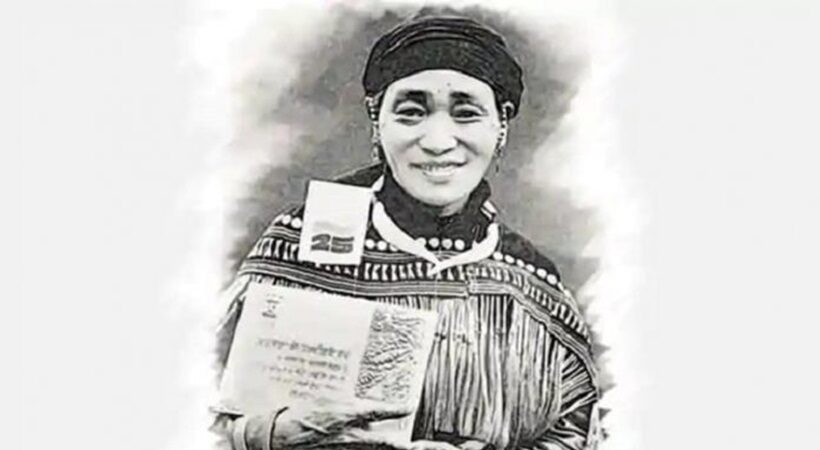Several freedom fighters had played a key role in the Indian independence movement, fighting against the British colonisers. Wherein we are familiar with most of the freedom fighters’, some got lost in the annals of history.
One such name is Gaindinliu, popularly known as Rani Gaidinliu, who joined the movement against the British colonisers at the age of 13 for the rights of her community. At 16, the Naga spiritual and political leader was sentenced to life imprisonment for leading a revolt against British rule in India from Manipur and Nagaland. However, post-independence, she was released and honoured with the title ‘Rani’ for her courage by the then prime minister Jawaharlal Nehru, who describing her as the “daughter of the hills”.

Early Life
Born on January 26, 1915, in a Rongmei Naga tribe family from Tamenglong district of present-day western Manipur, she was fifth among eight children. She was always keen on preserving the identity of her community, Zeliangrong- interconnected tribes named Zeme, Liangmai, Rongmei and Inpui exist across Assam, Manipur and Nagaland.
Brought up in a socially backward region, this valiant girl does not have a formal education, but this could not stop her from joining the freedom struggle.
The Heraka Movement and Gaidinliu
Haipou Jadonang, Gaidinliu’s cousin, who was then leading a socio-political movement called Heraka that means ‘pure’, influenced her at the age of 10 to join the movement to end the British rule in the region. Heraka began in the 1920s in the Zeliangrong territory to stop the infiltration of Christian missionaries and end the British government-imposed reforms.
In six years, Jadonang was able to get strong support from numerous tribes and emerged as a strong voice of opposition against the colonial rulers.

In return, Jadonang had to face the repression of British officers, who forced the tribals into rough labour, imposing a yearly high-revenue tax on every household. He was arrested by the British officials in 1931 and after a mere mock trial, he was sentenced to death for opposing and raising his voice against the colonial rule on 29 August in the same year. Meanwhile, Gaidinliu became a force to reckon with in the Heraka movement, which took inspiration from ancestral Naga practices and initiated guerrilla attacks on the British administrators.
Turning the Leader of Masses
After losing the leader of the Heraka movement, Gaidinliu carried the movement forward. Taking up the mantle, Gaidinliu began to revolt against the British colonisers. She followed Gandhian principles and asked Zeliangrong tribal people to refrain from paying taxes and rebelled against British rule. To fight the Britishers, she got assistance from the local Naga community. When she had the support of a majority of people, she posed a massive threat to colonial rule, calling the Non-Cooperation Movement in the Northeast.
As a result, the British started targeting Gaidinliu by fixing a monetary reward on her. Despite such efforts, she managed to escape across villages of Assam, Nagaland, and Manipur with her followers.
Perplexed by a raid under the instructions of Captain MacDonald, Gaidinliu accompanied by her followers were arrested without any resistance on October 17, 1932. She was taken on foot to Kohima and then to Imphal. After the trial that went on for around 10 months, she was charged and convicted for murder for her attack on the Assam Rifles. Although most of her associates were either executed or barred, she was sentenced to life imprisonment.
Gaidinliu served her 14 years (1933-1947) of life imprisonment at Guwahati, Shillong, Aizawl and Tura jails.
Rani Gaidinliu died on February 17, 1993, at the age of 79. The Indian government released a postage stamp in 1996 in her honour as well.



















